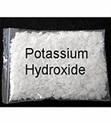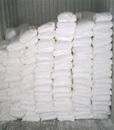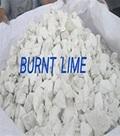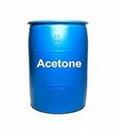- europages
- >
- Chemical fertilizers
- >
- JADAM
- >
- products
JADAM - Chemical raw material solution for water treatment, Detergents and Fertilizers.
Portugal
Agent/ Representative


JADAM
Portugal
Titanium dioxide, (TiO2), also known as titanium(IV) oxide or titania is a white, opaque, naturally occurring mineral existing in a number of crystalline forms, the most important of which are rutile and anatase. These naturally occurring oxide forms can be mined and serve as a source for commercial titanium Titanium dioxide is odourless and absorbent, mineral forms can appear black Because of its bright whiteness, it is used in products such as paints, coatings, papers, inks, toothpaste, cosmetics, glass, ceramics and food coloring Properties: CAS number,13463-67-7 Melting / freezing point Anataz: 1560°C, Rutyl: 1843°C, Brukit: 1825°C Boiling point range 3000°C Relative density Anataz: 3,9 kg/l (20°C), Brukit: 4,17 kg/l (20°C), Rutyl: 4,26 kg/l (20°C) Solubility in water 1μg/l Chemical formula TiO2 Appearance White solid Odor Odorless Molar mass 79.866 g/mol Density: 4.23 g/cm3 (rutile) 3.78 g/cm3 (anatase)
Request for a quote
JADAM
Portugal
Sodium benzoate also known as benzoate of soda is the sodium salt of benzoic acid, widely used as a food and beverages to extend shelf life preservative and a pickling agent It appears as a white crystalline odorless powder with the formula C6H5COONa, made by combining benzoic acid and sodium hydroxide Industries: Household chemicals, Cosmetic industry, personal care items, Food industry, Feed industry used as deter corrosion, such as in coolants for car engines also as a stabilizer in photo processing and to improve the strength of some types of plastic properties:, CAS number 532-32-1 WE number 208-543-8 Chemical formula C6H5COONa Molar mass 144,11 g/mol pH,9 (100 g/l H2O @20°C) Melting / freezing point 410 – 430°C Relative density 1,44 g/cm3 @20°C Solubility in water 556 g/l @20°C
Request for a quote
JADAM
Portugal
Potassium hydroxide is an inorganic compound commonly called caustic potash Along with sodium hydroxide (NaOH), KOH is a prototypical strong base, It has many industrial and niche applications, most of which utilize its caustic nature and its reactivity toward acids Industries: Household chemicals, Fertilizers, Cosmetic industry, Adhesives, oils, greases, Resins, plastics, polyurethanes Catalyst for hydrothermal gasification process Precursor to other potassium compounds Manufacture of soft soaps As an electrolyte Niche applications Properties: CAS number 1310-58-3 WE number 215-181-3 Chemical formula KOH Molar mass 55,11 g/mol Customs tariff code 28152000 ADR UN1814 Melting / freezing point 360°C (100% KOH) Relative density 2,044 @20°C (100% KOH)
Request for a quote
JADAM
Portugal
Hydrate lime Calcium hydroxide (traditionally called slaked lime) is an inorganic compound with the chemical formula Ca(OH)2 It is a colorless crystal or white powder and is produced when quicklime (calcium oxide) is mixed with water It has many names including hydrated lime, caustic lime, builders' lime, slaked lime, cal, and pickling lime Calcium hydroxide is used in many applications, including food preparation, also called milk of lime, is the common name for a saturated solution of calcium hydroxide Industries: Glass and ceramics used to prepare lime mortar as a flocculants, in water and sewage treatment because of its low toxicity and the mildness of its basic properties, slaked lime is widely used in the food industry Properties: CAS number 1305-62-0 WE number 215-137-3 Chemical formula Ca(OH)2 Molar mass 74,09 g/mol Customs tariff code 25222000 pH 12,4 @20°C Melting / freezing point > 450°C Relative density,2,24 g/cm3
Request for a quote
JADAM
Portugal
Burnt lime Calcium oxide (CaO), commonly known as quicklime or burnt lime, It is a white, caustic, alkaline, crystalline solid at room temperature Calcium oxide that survives processing without reacting in building products, such as cement, is called free lime Industries: Glass and ceramics production of glass, calcium aluminate cement, and organic chemicals production of aerated concrete such as blocks with densities of ca. the major use of quicklime is in the basic oxygen steelmaking (BOS) process the quicklime neutralizes the acidic oxides, SiO2, Al2O3, and Fe2O3, to produce a basic molten slag Properties: CAS number 1305-78-8 WE number 215-138-9 Chemical formula CaO Molar mass 56,08 g/mol Customs tariff code 28259019 pH 12,3
Request for a quote
JADAM
Portugal
Talc is a naturally occurring mineral, mined from the earth, composed of magnesium, silicon, oxygen, and hydrogen. Chemically, talc is a hydrous magnesium silicate with a chemical formula of Mg3Si4O10(OH)2 Talc has many uses in cosmetics and other personal care products, it may be used to absorb moisture, to prevent caking, to make facial makeup opaque, or to improve the feel of a product Industries: Paints and varnishes, Household chemicals, Cosmetic industry, Adhesives, oils, greases, Pharmaceutical industry, Building chemistry, Resins, plastics, polyurethanes Talc is used in many industries, including paper making, plastic, paint and coatings, rubber, food, electric cable, pharmaceuticals, cosmetics, and ceramics Properties: CAS number 14807-96-6 WE number 238-877-9 Chemical formula 3Mg2∙4SiO2∙H2O Molar mass 379,34 g/mol Customs tariff code 25262000
Request for a quote
JADAM
Portugal
Formaldehyde is a colorless, strong-smelling, flammable organic chemical with chemical formula CH2O it is produced industrially and used in building materials such as particleboard, plywood, and other pressed-wood products also it is used as a fungicide, germicide, and disinfectant, and as a preservative in mortuaries and medical laboratories It is produced naturally during the decay of plant material in the soil and during normal chemical processes in most living organisms, it is also a combustion product found in tobacco smoke. Industries: Household chemicals, fertilizers, adhesives, oils, greases, horticulture, feed industry, plastic industry, resins and textile industry Properties: CAS number 50-00-0 (36-50%) WE number 200-001-8 (36-50%) Index number 605-001-00-5 (35-50%) Chemical formula CH2O Customs tariff code 29121100 ADR UN2209 pH 3-4 Melting / freezing point ~100°C Boiling point / range 64–85°C Relative density 1,090–1,150 g/cm3 @20°C
Request for a quote
JADAM
Portugal
Hydrogen peroxide 30%,50% ,60% Hydrogen Peroxide (H₂O₂) is a colorless liquid with a slightly sharp odor it is used as a bleach for textiles and paper, as a component of rocket fuels, and for producing foam rubber and organic chemicals, it is also used in medicinal applications and to bleach clothes and hair. Industries: Household chemicals, Fertilizers, Cosmetic industry, Horticulture, Pharmaceutical industry, Food industry Uses: Bleaching,Production of organic peroxy compounds,Production of inorganic peroxides Sewage treatment,Disinfectant,Propellant Properties: CAS number 7722-84-1 WE number 231-765-0 Chemical formula H2O2 Molar mass 34,01 g/mol Customs tariff code 28470000 ADR UN2014 pH 1,5 – 4 Melting / freezing point - 33°C (35%), -51°C (50%), -56°C (60%) Boiling point 108°C (35%), 114°C (50%), 119°c (60%) Relative density 1,07 g/cm3 (35%), 1,195 (50%), 1,241 (60%)
Request for a quote
JADAM
Portugal
Acetone is a colorless liquid, it is also known as propanone, with chemical formula (CH3)2CO, highly volatile and flammable liquid with a characteristic pungent odor Acetone is a solvent that mixes well with water and evaporates quickly, making it well-suited for many household and manufacturing uses, include nail polish remover, automotive or furniture lacquer, de-gummer or degreaser for textile products, and it can even be used in plastic production It is also safe for use as an indirect food additive in adhesives and food-contact coatings Industries: Paints and varnishes, Household chemicals, Cosmetic industry, Adhesives, oils, greases, Pharmaceutical industry, Resins, plastics, polyurethanes, also it is an important chemical solvent Properties: CAS number 67-64-1 WE number 200-662-2 Chemical formula CH3COCH3 ADR UN1090 Melting / freezing point -94,7˚C Boiling point range 56,05˚C– 56,5˚C Relative density 790 kg/m3 @20ºC
Request for a quote
JADAM
Portugal
Glycerine is a colorless, odorless, clear, viscous liquid that is sweet-tasting and non-toxic it is a natural compound derived from vegetable oils or animal fats Chemical name is Glycerol with chemical formula C3H5(OH)3 Industries: Paints and varnishes, Household chemicals, Fertilizers, Cosmetic industry, Adhesives, oils, greases, Horticulture, Pharmaceutical industry, Food industry, Feed industry, Resins, plastics, polyurethanes Uses: Humectant, solvent, and sweetener, and may help preserve foods Filler in commercially prepared low-fat foods Thickening agent in beverages Medical and personal care Botanical extracts Electronic cigarette liquid Antifreeze Chemical intermediate Vibration damping Properties: CAS number 56-81-5 WE number 200-289-5 Chemical formula C3H8O3 Molar mass 92,1 g/mol Customs tariff code 29054500 pH 5-7 Melting / freezing point -10°C Boiling point range 100-130°C Relative density ~1200 kg/m3 @15°C
Request for a quoteAgent/ Representative
Lisbon Estrada de Alfragide Lote 107 Ed. A2
2610-008 Lisbon - Portugal